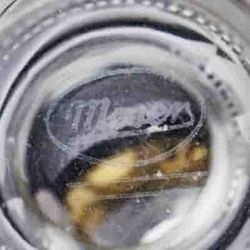
История стекольного завода Moser.
В далеком 1857 году коммерсант по имени Людвиг Мозер основал в Карловых Варах стекольный завод, который получил имя своего создателя – Moser. На протяжении долгих шестидесяти лет Людвиг управлял данным предприятием, а оно росло и процветало.
Однако предпринимательская жилка, доставшаяся Людвигу от его деда, который был владельцем единственной кошерной столовой в Карловых Варах, не позволила ему разориться. Мозер сразу же принял решение выпускать стильные изделия, направленные на удовлетворение самых изысканных вкусов местной аристократии. В конечном итоге, большинство политических лидеров и других видных деятелей были очарованы чудесными изделиями их Мозерского хрусталя, который по праву получил название «хрусталь королей».
В списке постоянных клиентов Людвига были такие имена как Эдуард VII (король Великобритании) и Елизавета II (королева Великобритании), Альфонс XIII (король Испании) и папа римский Иоанн Павел II, а также многие другие. Интересно то, что император Франц Иосиф I пожаловал Мозеру графский титул. Учитывая то, что знаменитый гравер был европейцем, подобное в те времена было практически невозможным.
В конце 19 - начале 20 века Moser начал производство бессвинцового хрусталя, используя уникальные, экологически чистые процессы, благодаря которым он разработал твердый хрусталь, сверкающий как свинцовый но без его использования. Секрет удачного рецепта кроется в уникальном сочетании сырья высочайшего качества. Появляется бессвинцовая эмаль Moser родом из классического «чешского хрусталя», но имеющая дополнительные достоинства:
С экологической точки зрения плавление не загрязняет воздух тяжелыми металлами и, следовательно, не повреждает его и здоровье стеклодувов. Состав химически сложнее, что является технологическим преимуществом для техники шлифования кромок и разработки гравированных декоров.
Имеет более высокий показатель преломления (более 1,5), т.е. стекло более блестящее и сверкающее, оно имеет большую светопроницаемость. Хорошо окрашивается и дает спектрально более чистые цвета.
Базовые цвета Moser александрит (светлый фиолетовый), берилл (светло-зеленый), топаз (медовый коричневый), розалин (светло-розовый), аквамарин (светлый синий) и элдор (желтый) имеют свое происхождение от цветов драгоценных камней и характеризуются более мягкими и приятными оттенками. Плавится с примесью редкоземельных элементов и оксидов металлов. Цветной александрит имеет особую специфику, он меняет цвет при флуоресцентном освещении от светло-фиолетового до светло-голубого.
Отметим, что в 1923 году Ватикан заказал у компании Moser набор стекольных изделий специально для резиденции папы Пия XI. В 1990-х годах стекольная фабрика изготовила чудесный хрустальный крест, который вскоре был преподнесен чешскому президенту Вацлаву Гавелу в качестве подарка.
Девиз Мозер: Мы не производим, мы создаём.
Трудно найти в мире группу художников, собранных под одной крышей, которые работали бы под таким давлением, как группа стеклодувов в Мозере. Для изготовления вазы требуется сотрудничество более 40 мастеров по стеклу. Стекло на стеклянной трубе иногда тяжелее 25 килограммов. Неправильно обрезанный край или неточно выгравированный орнамент никак не подлежат ремонту. Достаточно одной небольшой невнимательности, и в результате работа оканчивается осколками. Именно эта традиция элитных создателей, отдающих все свои силы в командной работе, и является секретом непреходящего качества Moser. От них во многом зависит дальнейший успех бренда.
Утром хрусталь Мозер может оживить интерьер своим блеском, как и цветы. Ночью его цвет меняется и согревает пространство возвышенной элегантностью. За последние 160 лет лишь немногие смогли овладеть цветом, как стеклодувы Мозер. Культовые оттенки Moser очаровывают так же ярко, как художники масляными красками. Как правило, тона Moser создавались долгими экспериментами, и стекольный завод на протяжении поколений тщательно охранял правильные пропорции красящих ингредиентов.







